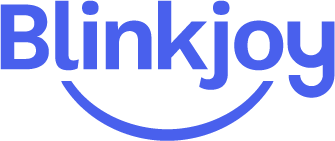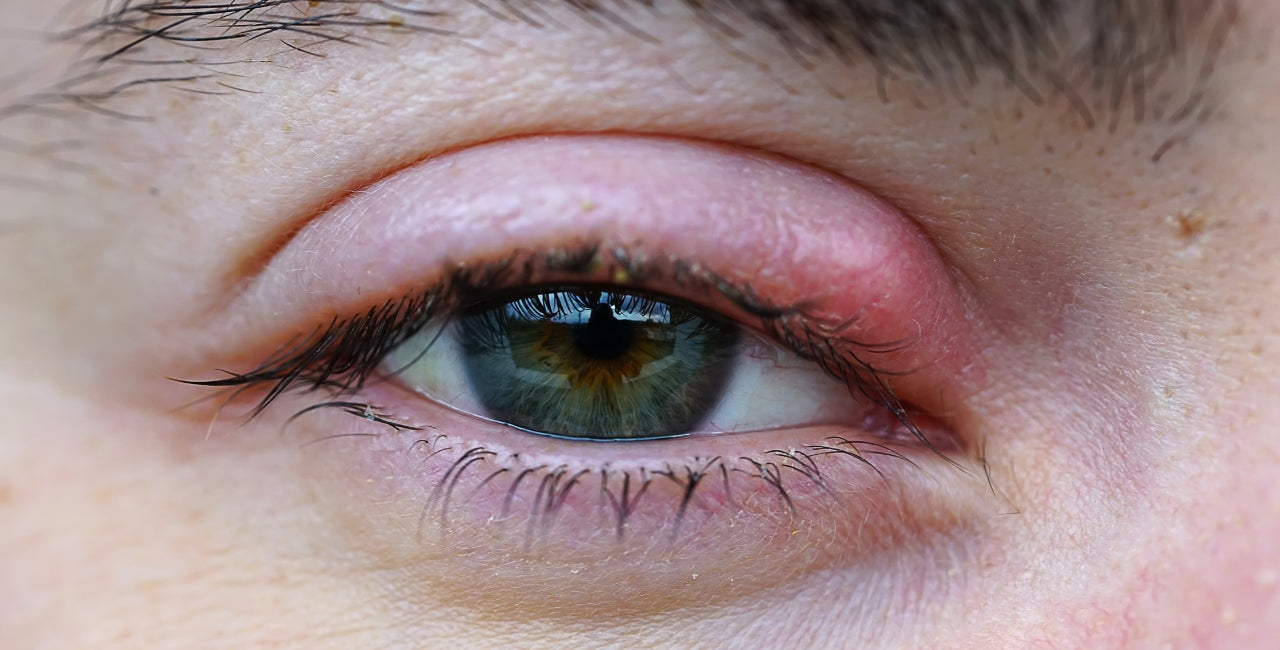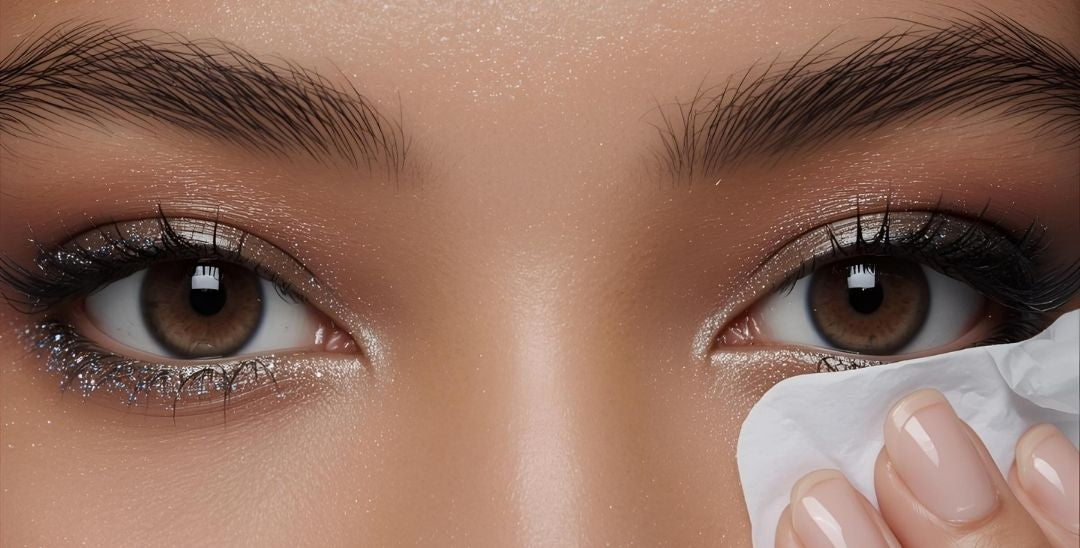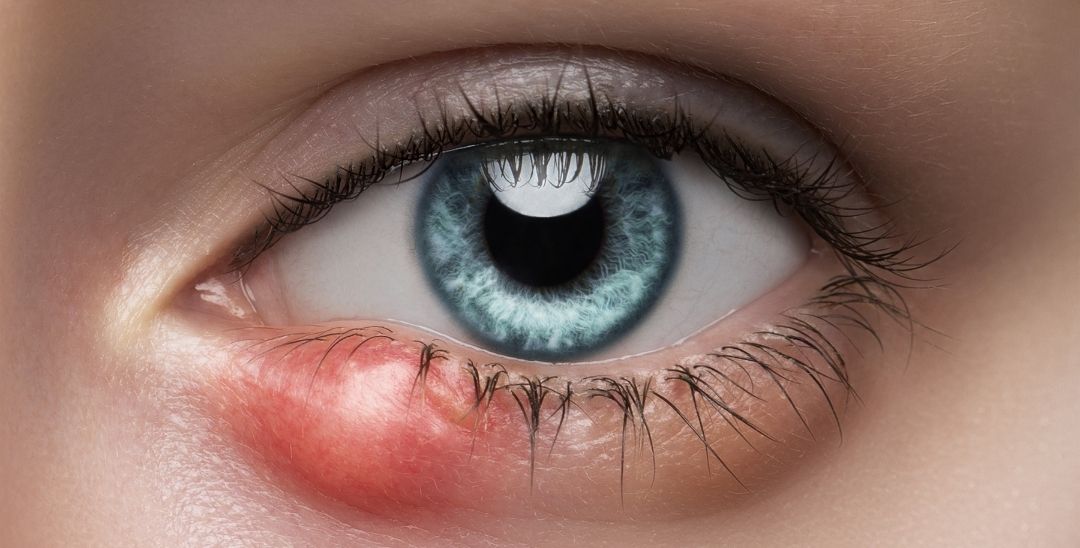What is a Chalazion?
A chalazion is a clogged oil gland of the eyelid (2). These are quite common and have many predisposing risk factors: poor eyelid hygiene, eyelid infections, hormonal changes, ocular rosacea, chronic immune deficiency, chronic bacterial buildup or inflammation of the eyelids (blepharitis), and others. Chalaziae can be irritating and uncomfortable, but with the right tools, you can manage them effectively at home. When oil glands (sebaceous glands) in the eyelids become plugged, debris and bacteria can also become trapped inside the gland leading to swelling, redness, and discomfort. Here are some simple at-home treatments that can help reduce the inflammation and speed up the healing of chalaziae.
1. Heated Eye Masks
Applying warmth is the one of the most effective ways to help a stye resolve (1). Heat is ideally applied after the area is no longer tender. Direct application of heat and some gentle massage over the affected area of the eyelid helps to unclog the gland and soften any hardened sebaceous content or trapped debris within the gland (4).
- Heated Eye Masks: These reusable masks provide consistent, gentle warmth and are more effective than traditional warm compresses. Many are self-heating or rechargeable and remain warm for 10-15 minutes, making them convenient and hassle-free. The Blinkjoy Rechargeable Heat Mask is a great option that fits these criteria.
- Warm Compress: Soaking a clean washcloth in warm water and placing it over the affected eye for 10 minutes 3 to 4 times a day can aid in healing. Warm compresses used this way are quite a bit more work as the cloth will need to be reheated several times during the treatment to maintain the correct temperature throughout the 10-minute treatment time. A better and more effective option is the Blinkjoy Moist Heat Eye Compress. This compress is microwaveable and will retain the heat at the ideal temperature for the proper time interval, eliminating the need for reheating and re-wetting.
Keep in mind that when an eyelid bump is red and tender, it is usually in an infected stage and heat can actually worsen redness and inflammation. In addition to this, some patients with ocular rosacea may experience worsened inflammation and redness with the application of heat. Apply heat after the area is no longer tender to avoid increasing the inflammation. If the area is still painful or inflammation increases with your compress, try applying a cold compress or washcloth instead and consider getting the area checked by your eye care practitioner in case there might be something else going on that needs attention.
2. Lid Scrubs and Cleansing Solutions
Bacteria and debris buildup on the eyelid and eyelash area can increase risk of developing styes, chalaziae and eyelid infections (2). Keeping the eyelids clean to prevent bacterial buildup and managing blepharitis flare-ups can help with faster recovery as well as in preventing new styes from forming. Presence of higher levels of bacteria on the lids also contributes to worsened discomfort and potentially chronic inflammation. Some options for maintaining eyelid hygiene are as follows:
- Lid Scrub Wipes: Pre-moistened, gentle wipes can help remove debris and excess oil, reducing risk of further irritation. Most wipes also have antimicrobial properties or other ingredients to reduce bacteria.
- Eyelid cleansers: Special eyelid foams or cleansers to reduce bacteria are also good options.
- Hypochlorous acid sprays: Hypochlorous acid [HOCl] is a naturally-occurring antimicrobial that is already present in your body. Try applying an HOCl eyelid spray over closed eyes twice daily to reduce bacteria and skin mite buildup. Using hypochlorous acid lid sprays can help chalaziae and eyelid infections resolve faster (3) and help to prevent recurrences.
Some eyelid hygiene cleansing options may or may not be advised depending on your clinical picture. Always ask your eye doctor if you are unsure.
3. Omega-3 Supplements
Newer studies are showing that a daily dose of docosahexaenoic acid (DHA) and eicosapentaenoic acid (EPA), two common types of omega-3 fatty acids, provides a significant improvement in meibomian gland function as well as a reduction in overall inflammation and symptoms of dry eye due to meibomian gland dysfunction (MGD). Meibomian gland dysfunction is a common finding among patients who suffer from recurrent blepharitis and styes. It is important to note that the supplement should be in reesterified triglyceride form for optimal bioavailability, systemic absorption and therapeutic effect (5). Some omega-3 supplements have extra ingredients in them that could interact with other medications - ask your eye care practitioner if you are unsure about this.
4. Proper Eye Hygiene
To prevent future occurrences, practice good eye hygiene:
- Avoid touching or rubbing your eyes.
- Replace eye makeup regularly to prevent bacterial buildup.
- Clean contact lenses properly and avoid sleeping in them.
- Wash your hands often.
When to See a Doctor
If the chalazion or stye does not improve after trying the above recommendations, becomes extremely painful, affects your vision, or seems to be recurrent, it is best to consult with an eye care professional.
By using these simple at-home tools and remedies, you can reduce chalaziae and styes at home. These remedies also promote faster healing, reduce recurrences as well as promote better overall ocular health and hygiene.
References:
-
Wu, Albert Y., et al. "Conservative therapy for chalazia: is it really effective?." Acta ophthalmologica 96.4 (2018): e503-e509. https://onlinelibrary.wiley.com/doi/full/10.1111/aos.13675
-
Alsammahi, Alaa, et al. "Incidence and predisposing factors of chalazion." Int J Community Med Public Health 5.11 (2018): 4979. https://d1wqtxts1xzle7.cloudfront.net/108413012/2511-libre.pdf?1701818495=&response-content-disposition=inline%3B+filename%3DIncidence_and_predisposing_factors_of_ch.pdf&Expires=1741565405&Signature=JCj7AL5cnKxX2JWg-RCPXPUfqjrlVzIQfe5L9Cx09MLbqluK87nrd68OxFds05NWbu5wWi-bfKiwoitCDY0JLG-bmGoEkQnLngyrX969Q8dS1Jnz5iAp7iPjQOff-eMHpZRICXVfyUazmqjvCjmB-N3LNr8GS~z8eP4jgFTjIMih9yDZx4IE35rVGHTfJlMRjEX4z7seJ~n7H6WHpo46gaze1e9ZnyTc7-wwoYnjg76baqUpUXlz546UsClamspMVxpZrwBBAdH-ezLs1wSBOakVhk42zbrCcKSHKVDeIJIbRaWI4yYRrvuM1I~rwnfFFMpt~F-taUEr2uAIFOuMHQ__&Key-Pair-Id=APKAJLOHF5GGSLRBV4ZA
-
Bertone, Chiara, et al. "The role of hypochlorous acid in the management of eye infections: a case series." Drugs in Context 11 (2022). https://pmc.ncbi.nlm.nih.gov/articles/PMC9267159/
-
Kim, Eliott S., Evan E. Afshin, and Ebby Elahi. "The lowly chalazion." Survey of Ophthalmology 68.4 (2023): 784-793. https://www.sciencedirect.com/science/article/abs/pii/S0039625722001540
-
Faulkner, William J. "The role of omega-3 essential fatty acids in dry eye disease." Int J Clin Exp Ophthalmol 1.1 (2017): 055-9. https://www.clinophthaljournal.com/apdf/ijceo-aid1008.pdf
Contributors:

Sarah Farrag, OD
Dr. Sarah Farrag is originally from Halifax, Nova Scotia, and is happy to be practicing optometry in her hometown. She graduated with honors from the University of Waterloo Doctor of Optometry program in June 2015. In addition to routine optometric care, Dr. Farrag also facilitates an advanced dry eye clinic offering specialty consultation and treatment for severe dry eye.





